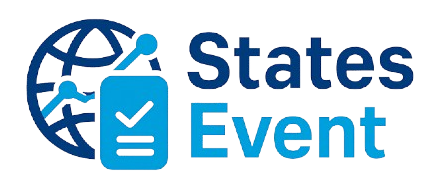This training program will explore the vital world of advanced financial statement analysis. This session will include a review of the four financial statements and a five-step analysis model including liquidity, activity, leverage, operating performance, and cash flow. It will also review the Z-score (bankruptcy predictor) and the sustainable growth models. The webinar is a must for all commercial lenders and credit administrators.
WHY SHOULD YOU ATTEND?
This webinar will demonstrate a comprehensive approach to financial statement analysis. The session will begin with analyzing the four financial statements - income statement, statement of retained earnings, balance sheet, and statement of cash flows. This will include revenue and expense recognition, FIFO, LIFO and average inventory costing models, operating expenses (repairs) versus improvements, depreciation including straight-line, units-of-production, and double-declining balance, amortization, and depletion.
The webinar will also explore accounts receivable assessment, allowance for doubtful accounts, intangible assets, accounts payable assessment, capital, and operating leases, and analysis of the equity section of the balance sheet including partners' capital accounts, common and preferred stock, treasury stock, stock splits and retained earnings. Additionally, the types or levels of financial statements will be highlighted including company-prepared, compiled, reviewed, and audited. The audited financial statements will include unqualified, qualified, adverse, and disclaimer.
LEARNING OBJECTIVES
- An introduction to a five-part financial statement analysis model which will include:
- Liquidity: How to determine the true cash position of a company by eliminating certain current asset accounts from the working capital, current ratio, and quick ratio calculations
- Activity: How to correctly interpret a company's accounts receivable, accounts payable, and inventory turnover? The turnover calculations will then be used to determine a company's cash conversion cycle
- Leverage: How to calculate the debt versus equity position of a business and adjust the calculation through the use of a subordination agreement
- Operating Performance: How to gauge a company's true profitability and the difference between accrual versus cash basis income statements
- Cash Flow: calculate, interpret, and apply cash flow models including traditional EBITDA, fixed-charge coverage, free cash flow (FCF), cash basis cash flow, and uniform credit analysis cash flow (UCA)
- A review of related topics of the Z-score (bankruptcy predictor) and the sustainable growth models
- Case studies to illustrate the five-part analysis model and the correct interpretation of the financial statements
WHO WILL BENEFIT?
- Commercial lenders
- Credit analysts
- Relationship managers
- Business owners
- Compliance managers and officers
- Risk managers and officers
- Controllers
- Presidents/vice presidents
- Managers/supervisors
- Sales representatives
- Marketing personnel
- Retail businesses owners
- Maintenance and security employees
- Stock room personnel
- Business vendors
This webinar will demonstrate a comprehensive approach to financial statement analysis. The session will begin with analyzing the four financial statements - income statement, statement of retained earnings, balance sheet, and statement of cash flows. This will include revenue and expense recognition, FIFO, LIFO and average inventory costing models, operating expenses (repairs) versus improvements, depreciation including straight-line, units-of-production, and double-declining balance, amortization, and depletion.
The webinar will also explore accounts receivable assessment, allowance for doubtful accounts, intangible assets, accounts payable assessment, capital, and operating leases, and analysis of the equity section of the balance sheet including partners' capital accounts, common and preferred stock, treasury stock, stock splits and retained earnings. Additionally, the types or levels of financial statements will be highlighted including company-prepared, compiled, reviewed, and audited. The audited financial statements will include unqualified, qualified, adverse, and disclaimer.
- An introduction to a five-part financial statement analysis model which will include:
- Liquidity: How to determine the true cash position of a company by eliminating certain current asset accounts from the working capital, current ratio, and quick ratio calculations
- Activity: How to correctly interpret a company's accounts receivable, accounts payable, and inventory turnover? The turnover calculations will then be used to determine a company's cash conversion cycle
- Leverage: How to calculate the debt versus equity position of a business and adjust the calculation through the use of a subordination agreement
- Operating Performance: How to gauge a company's true profitability and the difference between accrual versus cash basis income statements
- Cash Flow: calculate, interpret, and apply cash flow models including traditional EBITDA, fixed-charge coverage, free cash flow (FCF), cash basis cash flow, and uniform credit analysis cash flow (UCA)
- A review of related topics of the Z-score (bankruptcy predictor) and the sustainable growth models
- Case studies to illustrate the five-part analysis model and the correct interpretation of the financial statements
- Commercial lenders
- Credit analysts
- Relationship managers
- Business owners
- Compliance managers and officers
- Risk managers and officers
- Controllers
- Presidents/vice presidents
- Managers/supervisors
- Sales representatives
- Marketing personnel
- Retail businesses owners
- Maintenance and security employees
- Stock room personnel
- Business vendors
Speaker Profile
 David L. Osburn
David L. Osburn
David L. Osburn is the founder of Osburn & Associates, LLC, a business training and contract CFO firm that provides webinars, webinars, and keynote speeches for CPAs, bankers, attorneys, credit managers, and business owners on topics such as banking/finance/credit, negotiation skills, marketing, and management issues.Mr. Osburn’s contract CFO clients include medical practitioners, financial institutions, law firms, CPA firms, architects, real estate developers, and contractors. His extensive professional background of over 30 years includes 16 years as a business trainer/contract CFO and 16 years as a bank commercial lender including the position of vice president/senior banking officer. His banking credentials include …
Upcoming Webinars

Treating Employees Like Adults: Discipline versus Empowerme…

7 Ways To Beat Burnout: Without Quitting Your Job


How to Write Procedures to Avoid Human Errors

Ethical Terminations: Navigating Employee Exits with Legal …

Understanding EBITDA – Definition, Formula & Calculation

Handbook Overhaul 2026: Compliance, OBBB Act & Beyond

FDA Proposes Framework to Advance Credibility of AI Models

Project Management for Non-Project Managers - Scheduling yo…

Data Integrity and Privacy: Compliance with 21 CFR Part 11,…


4-Hour Virtual Seminar on Hidden Secrets of Selling & Marke…

Validation Statistics for Non-Statisticians

Work Shouldn’t Feel Like A Soap Opera: Less Drama. More Foc…

Offboarding with Care: Conducting Legal & Ethical Employee …


The Alphabet Soup: When the FMLA, ADA, COBRA, and Workers' …

2-Hour Virtual Seminar on How to Conduct an Internal Harass…

Managing Toxic & Other Employees Who have Attitude Issues

Payments Fraud Detect & Prevent Check, ACH and P-Card Schem…

Reduce Stress in the Workplace: Effective Ways to Handle Co…

Language is Code - Intro to AI - Generative AI - ChatGPT an…


GROUPBY and PIVOTBY functions. Pivot table killers?





How to Prepare for a Regulatory Inspection: FDA, EMA, and N…

Excel - Reporting Simplified - Learn Pivot Tables from Scra…


The Power of Trust: Why It Should Matter to All Leaders & H…

California Meal and Rest Breaks: What You Don't Know Can Co…


How to Reduce Human Error in a GMP Manufacturing Floor

2-Hour Virtual Seminar on the 6 Most Common Problems in FDA…

Maximizing Productivity with ChatGPT: AI Solutions for HR, …

Excel - Pivot Tables - The Key To Modern Data Analysis and …

Re-imagine Finance & Accounting Made Simple. Three Webinars…

Form W-9 Compliance to Avoid Penalties: TIN Verification, B…

21 CFR Part 11 - Compliance for Electronic Records and Sign…

New EEOC Report: Workplace Harassment Prevention Not Workin…

Transforming Change and Conflict into Diverse-Inclusive-Col…

ChatGPT and Project Management: Leveraging AI for Project M…

Excel Power Skills: Master Functions, Formulas, and Macros …

Construction Lending And Real Credit Administration: Evalua…

Develop People Intelligence: Is Your Communication Style as…
